Abstract
1. Four naïve subjects clothed in protective suits were immersed up to the neck in water on twenty-two occasions, the minimum skin temperature was 20 degrees C and the average skin temperature 26 degrees C. Subjects at first rested, initially demonstrating an increase in thermal muscular tone which did not lead to perceptible limb movements. Later, while resting, visible shivering with small unco-ordinated limb movements supervened. The subjects then exercised while still immersed by stationary cycling. 2. Steady-state minute oxygen consumption (VO2) and minute ventilation (VE) were measured on 152 occasions by timed collection of expired air. 3. The first collection was made at least 5 min after initial immersion. Hyperventilation due to recent immersion in cold water was not demonstrated. 4. The same linear relationship between VE and VO2 was demonstrated whether the increased oxygen consumption was due to shivering alone or to a combination of shivering and exercise. 5. VE was matched to VO2 in spite of an increase in the work of breathing as well as any ventilation-perfusion mismatching as a consequence of head-out water immersion. 6. Minute ventilation was not influenced by the large co-ordinated limb movements which only occurred during exercise. These results reinforce previous findings which have shown that in conscious man VE can be closely matched to VO2 below the anaerobic threshold despite large variations in the type and intensity of limb movements. 7. When VO2 is increased by thermal muscular tone VE is increased in direct proportion in a situation when the limbs are not perceptibly moving at all.
Full text
PDF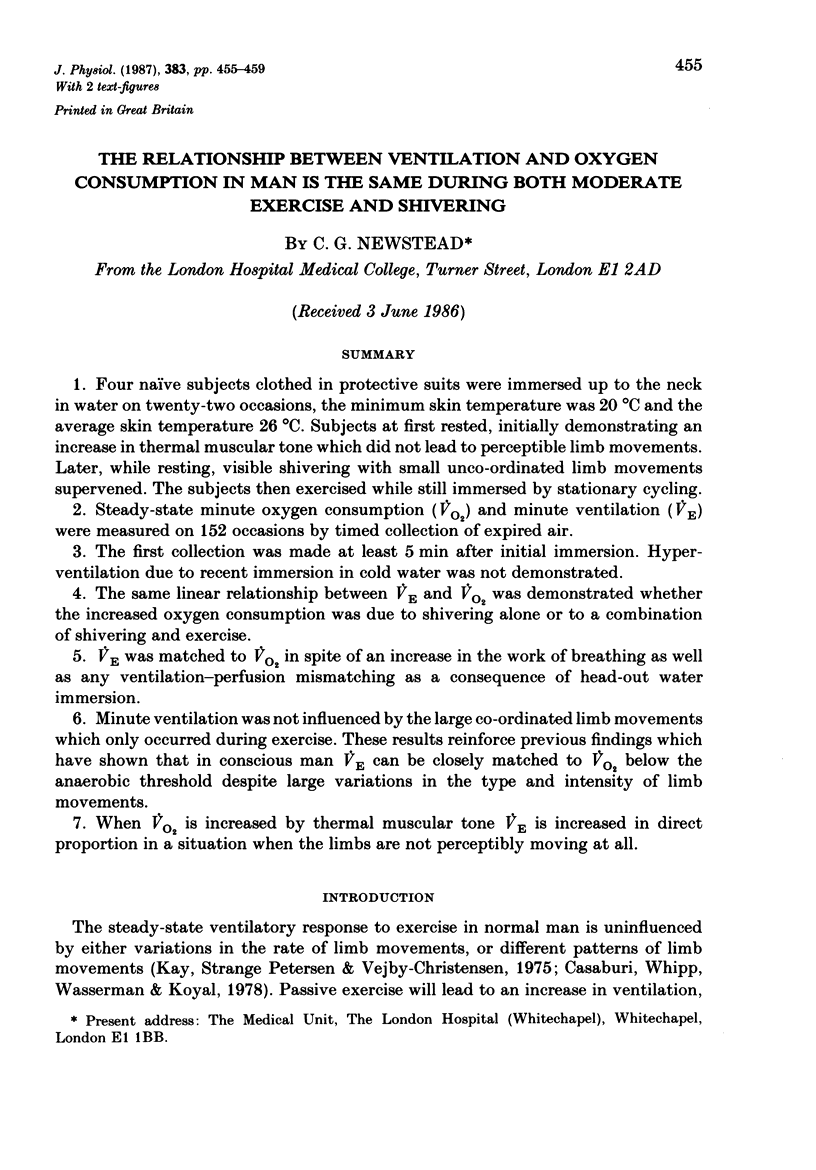
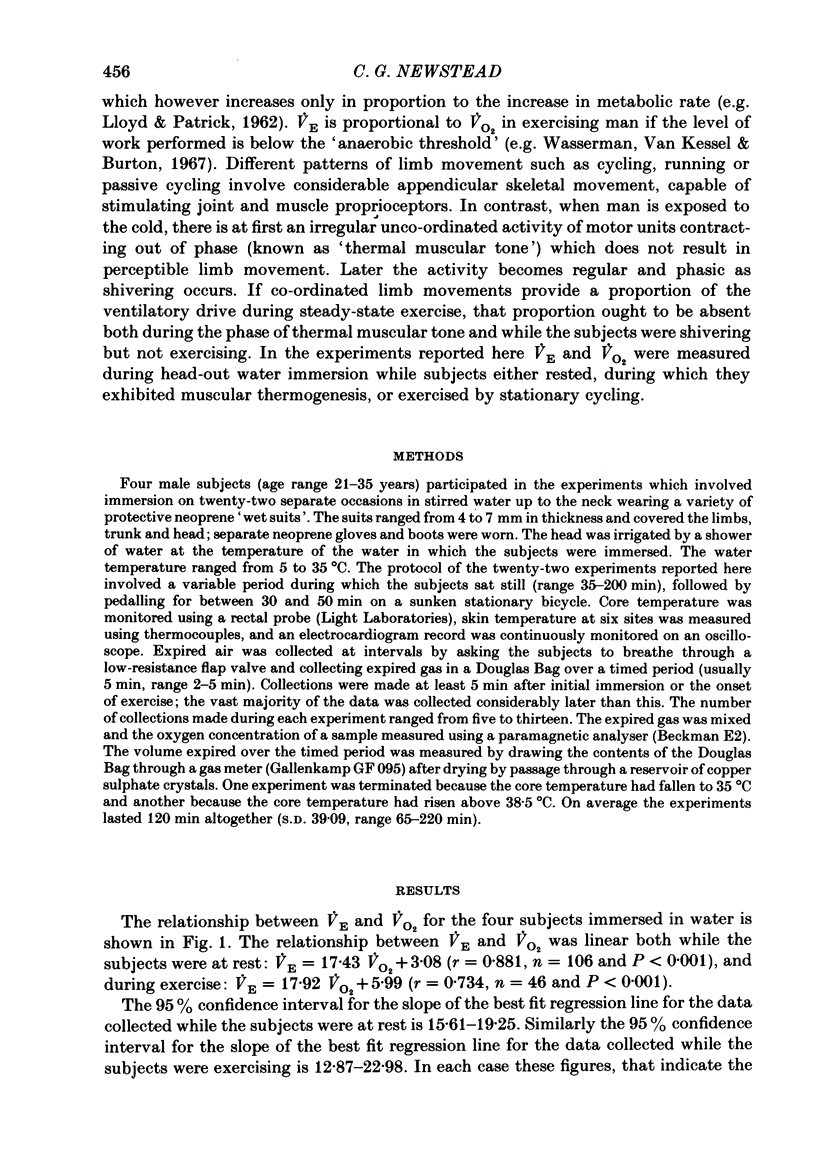
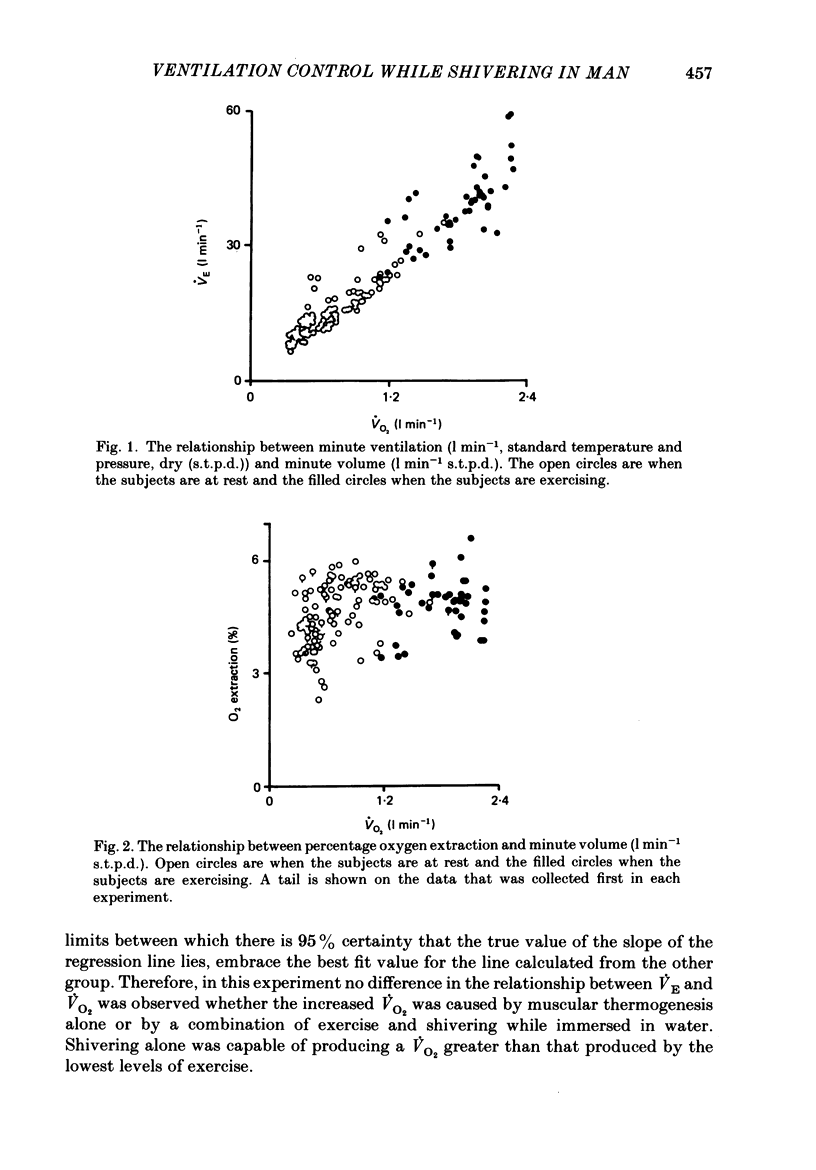
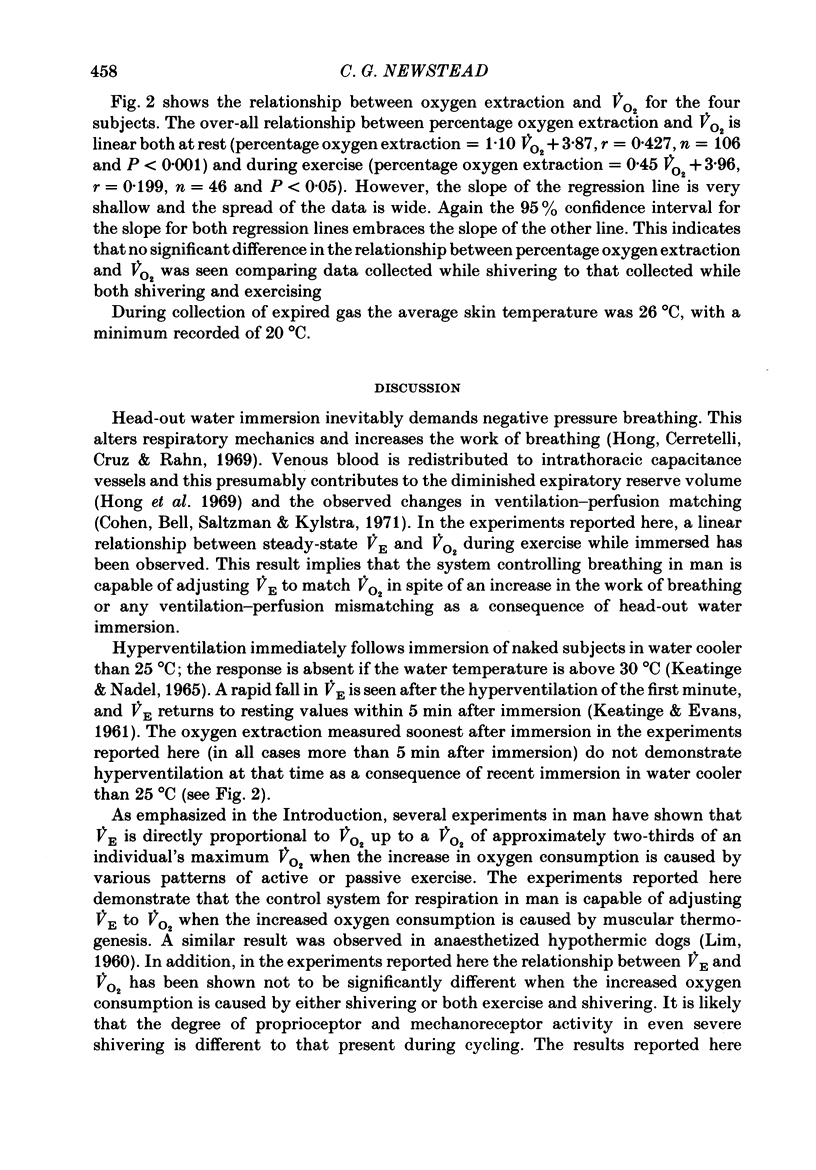
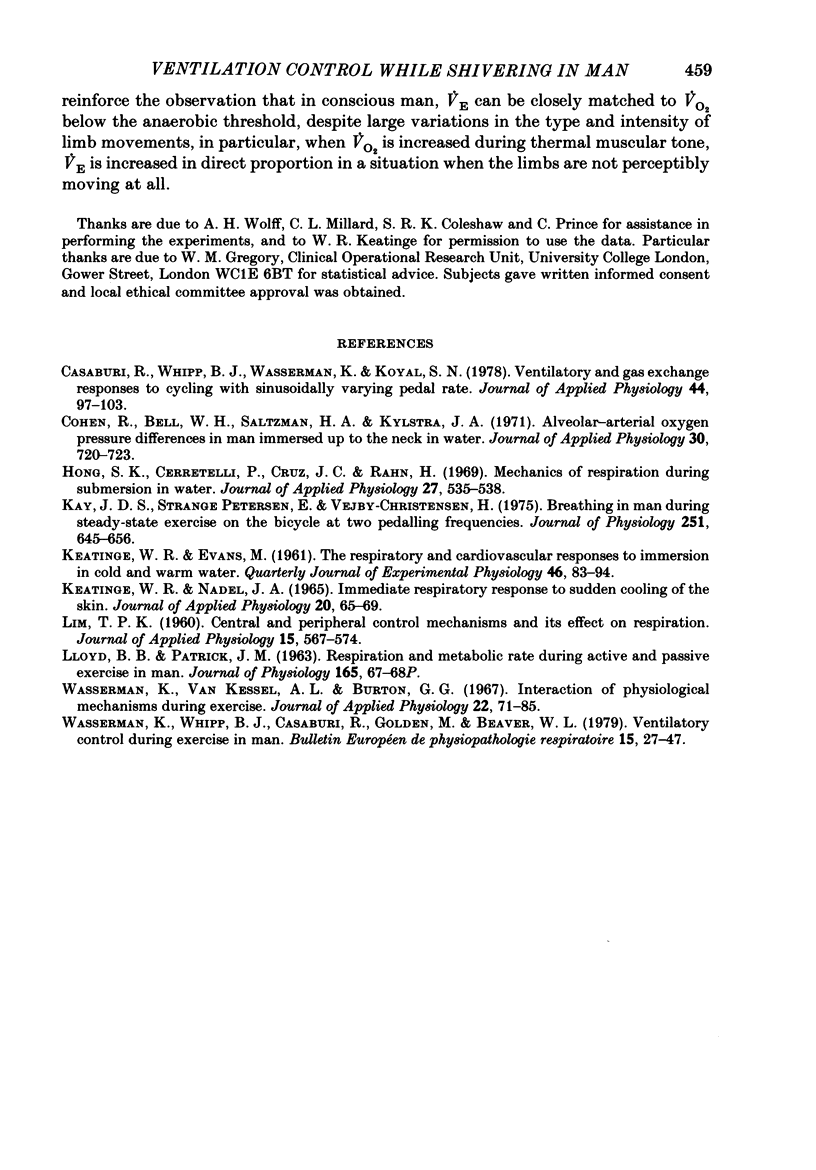
Selected References
These references are in PubMed. This may not be the complete list of references from this article.
- Casaburi R., Whipp B. J., Wasserman K., Koyal S. N. Ventilatory and gas exchange responses to cycling with sinusoidally varying pedal rate. J Appl Physiol Respir Environ Exerc Physiol. 1978 Jan;44(1):97–103. doi: 10.1152/jappl.1978.44.1.97. [DOI] [PubMed] [Google Scholar]
- Cohen R., Bell W. H., Saltzman H. A., Kylstra J. A. Alveolar-arterial oxygen pressure difference in man immersed up to the neck in water. J Appl Physiol. 1971 May;30(5):720–723. doi: 10.1152/jappl.1971.30.5.720. [DOI] [PubMed] [Google Scholar]
- Hong S. K., Cerretelli P., Cruz J. C., Rahn H. Mechanics of respiration during submersion in water. J Appl Physiol. 1969 Oct;27(4):535–538. doi: 10.1152/jappl.1969.27.4.535. [DOI] [PubMed] [Google Scholar]
- KEATINGE W. R., EVANS M. The respiratory and cardiovascular response to immersion in cold and warm water. Q J Exp Physiol Cogn Med Sci. 1961 Jan;46:83–94. doi: 10.1113/expphysiol.1961.sp001519. [DOI] [PubMed] [Google Scholar]
- KEATINGE W. R., NADEL J. A. IMMEDIATE RESPIRATORY RESPONSE TO SUDDEN COOLING OF THE SKIN. J Appl Physiol. 1965 Jan;20:65–69. doi: 10.1152/jappl.1965.20.1.65. [DOI] [PubMed] [Google Scholar]
- Kay J. D., Petersen E. S., Vejby-Christensen H. Breathing in man during steady-state exercise on the bicycle at two pedalling frequencies, and during treadmill walking. J Physiol. 1975 Oct;251(3):645–656. doi: 10.1113/jphysiol.1975.sp011113. [DOI] [PMC free article] [PubMed] [Google Scholar]
- LIM T. P. Central and peripheral control mechanisms of shivering and its effects on respiration. J Appl Physiol. 1960 Jul;15:567–574. doi: 10.1152/jappl.1960.15.4.567. [DOI] [PubMed] [Google Scholar]
- Wasserman K., Van Kessel A. L., Burton G. G. Interaction of physiological mechanisms during exercise. J Appl Physiol. 1967 Jan;22(1):71–85. doi: 10.1152/jappl.1967.22.1.71. [DOI] [PubMed] [Google Scholar]


